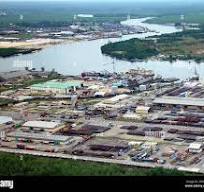By Enyeribe Anyanwu
One of “Murphy’s Laws and other Reasons Why Things go Wrong” says, “Anytime things appear to be going better, you have overlooked something”. Obviously, something or some things are being overlooked in the present euphoria over the imminent disbursement of the Cabotage Vessel Financing Fund (CVFF).
The disbursement of the CVFF has been a very difficult thing for government in the last twenty years. Suddenly, everything seems to be going smoothly, and disbursement will soon begin, all obstacles obstructing the process having disappeared.
Curiously, NIMASA that rejected the demand for 7.5% interest by five Primary Lending Institutions (PLIs) not long ago, has now approved 10% (double digit) interest rate demanded by 12 PLIs.
It can be recalled that the previous management of NIMASA said the disbursement of the Fund was stalled by the PLIs who were demanding a 7.5% interest rate as against NIMASA’s proposal of 6.5% in line with the CVFF’s enabling law that stipulates low, single-digit interest rate. But the present management, perhaps acting on the instructions of its supervising ministry, has handled this knotty issue in a manner that confounds both the loan beneficiaries and observers.
This is more so because, with 35% equity contribution, the PLIs had demanded 7.5% which was rejected, and with the same 35% equity contribution, 10% interest rate has been approved for them. Is it not obvious that something has been overlooked or is fishy?
The Federal Ministry of Marine and Blue Economy and the Nigerian Maritime Administration and Safety Agency (NIMASA) handling the disbursement of the Fund have said that the borrowers will get the CVFF loan at a single-digit interest rate of 6%. This declaration was made on Monday May 12, 2025, by the NIMASA DG, Dayo Mobereola, during a one-day interactive forum organized for stakeholders on the operationalization of the CVFF.
Dr. Mobereola, at the occasion, also dwelt on the transparency question, saying, “To ensure transparency and accountability, we have established a dedicated Secretariat Cabotage Unit, developed clear eligibility criteria, and partnered with 12 Primary Lending Institutions to facilitate access to the fund.”
As far as the disbursement of the CVFF is concerned, to the NIMASA DG, these are what define transparency. Regrettably, these measures alone cannot guarantee transparency, when certain things are deliberately swept under the carpet.
A transparent process must be free from all manner of pretense and deceit. It must be seen through, easily understood, and should lend itself to accessibility of information. At the said stakeholders’ interactive forum, some stakeholders raised some issues and asked pertinent questions which were deliberately ignored or deftly parried.
For the avoidance of doubt, some of the things NIMASA should do to demonstrate transparency in the process include: a clear declaration of how much is actually sitting in the CVFF account; whether this money, said to be in the Central Bank, would be transferred to the primary lending institutions or to NIMASA, what the role of the CBN in the process would be, will the PLIs and NIMASA pull together their contributions or will each act separately?
The next level of transparency is whether the beneficiaries of the fund will be made public or if that will remain secret information of government, NIMASA and the banks. Will the eligibility criteria ensure that briefcase shipping companies, special purpose vehicles (SPVs) and crony companies will not emerge on the scene?
Then, there is the big question which needs to be answered in the interest of transparency: Who actually owns the CVFF –the federal government, NIMASA or Nigerian ship owners? Does the money to be disbursed belong to the PLIs and NIMASA (government)?
Some time ago, during the regime of former President Buhari with Rotimi Amaechi as Transportation Minister, Nigerians were told that the CVFF belonged to the federal government. This was hotly disputed by ship owners and maritime stakeholders. But because of lack of oneness and the unprecedented impunity in the system, which has persisted till today, the stakeholders could not drag the government to court to get a declaration on an unambiguous stipulation of an Act of the National Assembly.
To keep the record straight, the Coastal and Inland Shipping (Cabotage) Act 2003 established the Cabotage Vessel Financing Fund (CVFF). The purpose of the Fund is to support Nigerian shipping companies in acquiring and maintaining vessels for domestic coastal trade, thereby promoting indigenous capacity. The idea is to help indigenous shipping companies to acquire the capacity to take control the nation’s cabotage trade in line with the provisions of the Cabotage Act.
The Fund, it must be restated, is to funded –and has been funded –by a 2% surcharge on Cabotage contracts and other fees and taxes under the Cabotage law. For over 20 years, this fund has accumulated.
Now, the long-delayed disbursement will soon begin, but the way the Fund is now being treated leaves one thoroughly confused. One finds it difficult to understand if it is the same CVFF that is being talked about or fund from somewhere else.
From all indications, the CVFF is being treated as government fund like the former SASBF (Ship Acquisition and Ship Building Fund). The disbursement process suggests that the Ministry of Marine and Blue Economy and NIMASA see the Fund as government fund or money made available by government for loans to Nigerian ship owners.
The role of banks in the process, it appears, is not just to ensure strictness and to make sure that the CVFF does not go the way of the SASBF, but to help government handle the loans disbursement as investors. Hence they are required to bring 35% equity contribution to the fund while NIMASA brings 50%.
This talk of equity contribution itself suggests that the CVFF disbursement has been turned to a business venture between the government, represented by NIMASA, and the primary lending institutions. Even a lay man knows that equity contribution refers to business ventures. It refers to financial commitment by partners or investors in a business venture with, of course, expectation of return on investments.
The venture, in this case, is the disbursement of the CVFF. If this is not the case, what is? Ordinarily, what NIMASA ought to do in the disbursement of the CVFF is to ensure that the actions of the banks align with the purpose of the Fund and the legal requirements which prioritize the beneficiaries’ interests. But the PLIs seem to be largely in control.
Truth be told, the CVFF is a revolving fund that belongs to the beneficiaries. It is supposed to be managed and disbursed by NIMASA to the beneficiaries. In other words, it is a pool of funds NIMASA helped to pool from the beneficiaries (ship owners), with intent to distributing it to them for a specific purpose.
Hence, the role of NIMASA ought to be more or less that of a trustee or administrator, rather than an investor or equity contributor. Similarly, banks are supposed to be agents or intermediaries, rather than investors making equity contributions.
Really, what is playing out appears to be contrary to the spirit of the Cabotage law. NIMASA and the banks appear to be more or less business partners. Wittingly or unwittingly, they are giving the public the impression of providing the funds, or sharing the funding burden, including sharing the risks. Instead of using the terms, “equity participation” or “co-investment”, they prefer to use “equity contribution” to mask the reality, but with little success.
Fully aware of the law and the sole purpose of the CVFF, NIMASA, after approving the 10% double digit interest rate demanded by the PLIs, is insisting that the loan is on 6% single digit. In order to lend plausibility to this opaque arrangement, the agency is saying it will dilute the 10% or more interest rates for the beneficiaries to 6%.
But some stakeholders are asking, when did NIMASA become a debt consolidation company, credit counselling agency of a loan broker? How is it going to dilute the high interest rate? But it says that it will do this with its 50% equity contribution.
During the forum, the agency’s financial consultant was quoted as saying, “What is the diluting factor here is the 50 percent equity share that comes from NIMASA. That is strategic. When you add the cost of funding from the PLIs and the cost of funding from NIMASA, we expect that it would not exceed the single digit interest rate”. If this is the case, why are the PLIs still demanding 10% or more interest rate? A case of the more you look…
According to a financial expert I interacted with on this issue, NIMASA’s claim of diluting the double digit interest rate is questionable. If the agency contributes 50% of the funding and the banks contribute 35%, it becomes unclear how it will dilute the interest rate without either absorbing the excess interest or renegotiating for lower interest rate with the banks. None of this, it is clear, is possible once all negotiations are over.
NIMASA has said it will contribute 50% equity while the PLIs will contribute 35% to the pool of fund to be loaned to the beneficiaries. If the agency makes this 50% contribution, which presumably, is the CVFF in the Central Bank, where will the money to dilute the interest rate come from?
The financial expert contended that there is potential deception, given the stipulation of the law for single-digit interest which NIMASA is well aware of, and yet approved double digits. Telling the potential beneficiaries to accept a double-digit interest rate with a promise to dilute it could be misleading and smacks of lack of transparency.
He urged the beneficiaries to exercise caution and seek adequate clarification from NIMASA regarding its plan to dilute the interest rate. They should know exactly how the high interest rate will be diluted before concluding negotiation with the banks. This advice is timely because you cannot know how deep a puddle is until you step into it.
And if the 50% equity contribution NIMASA is talking about is the CVFF which rightly belongs to Nigerian ship owners, and the beneficiaries are to access it on double digit interest rate, then the lack of transparency in the process becomes very obvious.
It is indeed a concerning situation if the CVFF is seen as belonging to the ship owners, and derived from 2% surcharge from their operations, yet NIMASA and the banks are pretending to be owners of the funds they are to disburse, talking about equity contributions, and charging double-digit interest rates above what is stipulated by law. This, indeed, raises the question of transparency, accountability and fairness.
Worse still, the beneficiaries are being told: “negotiate your rate of 35 percent with the banks. Whatever rate you get from your bank will be diluted by NIMASA to bring it down to a single digit interest rate.”
From this it is clear that the PLIs will charge different interest rates above 10 percent, depending on the beneficiary’s bargaining power. NIMASA’s intervention on the interest rate will be on case by case basis. Yet, it is declaring boldly that the beneficiaries will access the loan at 6% interest rate.
Obviously, the present administration wants to be known to have broken the jinx surrounding the disbursement of the controversial CVFF. In as much as the stakeholders and observers have been clamouring for the disbursement of the fund all these years, the way this is achieved matters. It should not be in a hazy manner that sets the stage for future problems, or raises a big question of transparency.
So much for “key performance indicator”!





More Stories
Resolving the 4 per cent FOB Levy imbroglio
Interrogating NIWA’s 70% death reduction claims on inland waterways
Dantsoho moves to reverse decades-old neglect of Eastern Ports